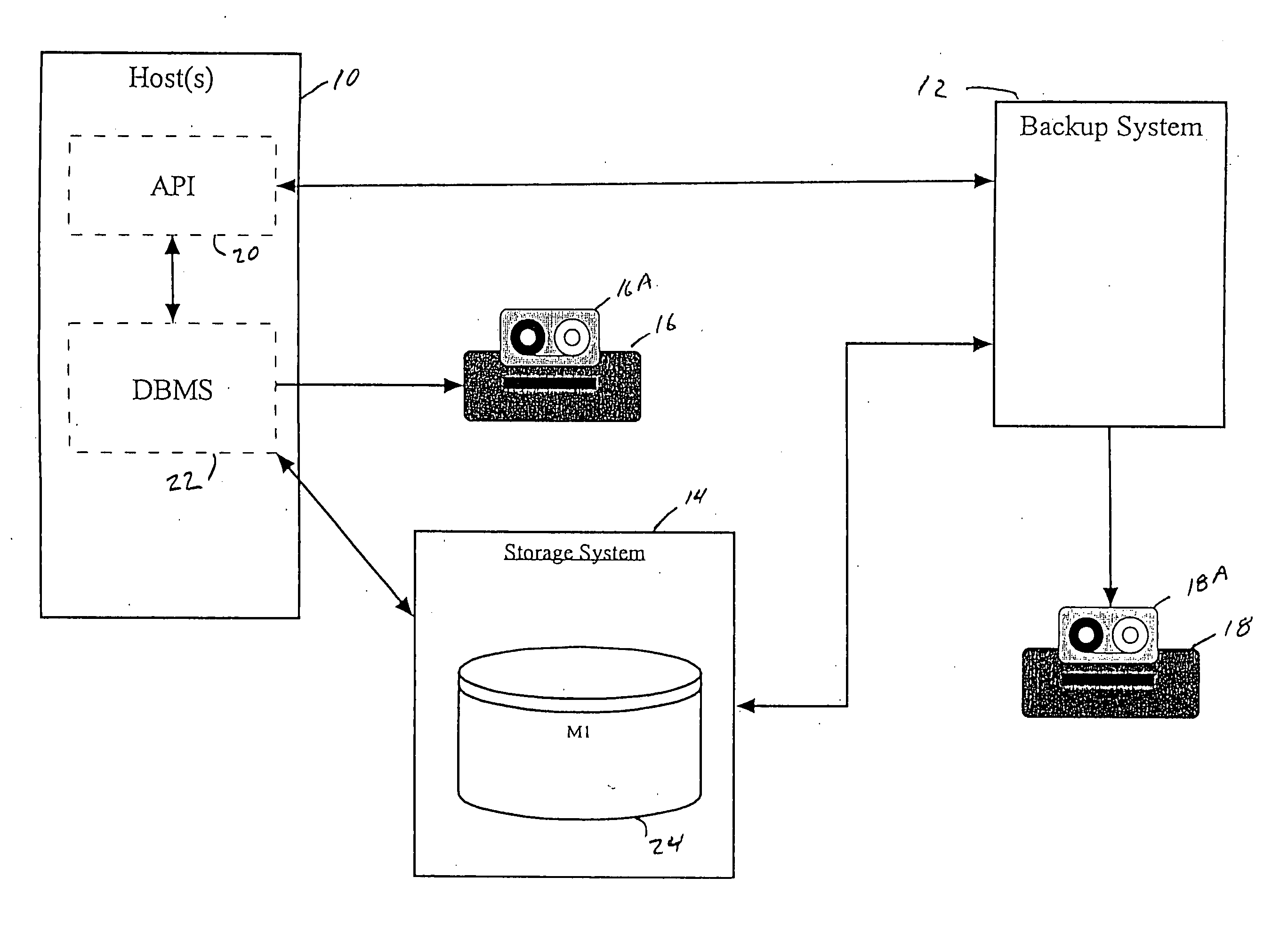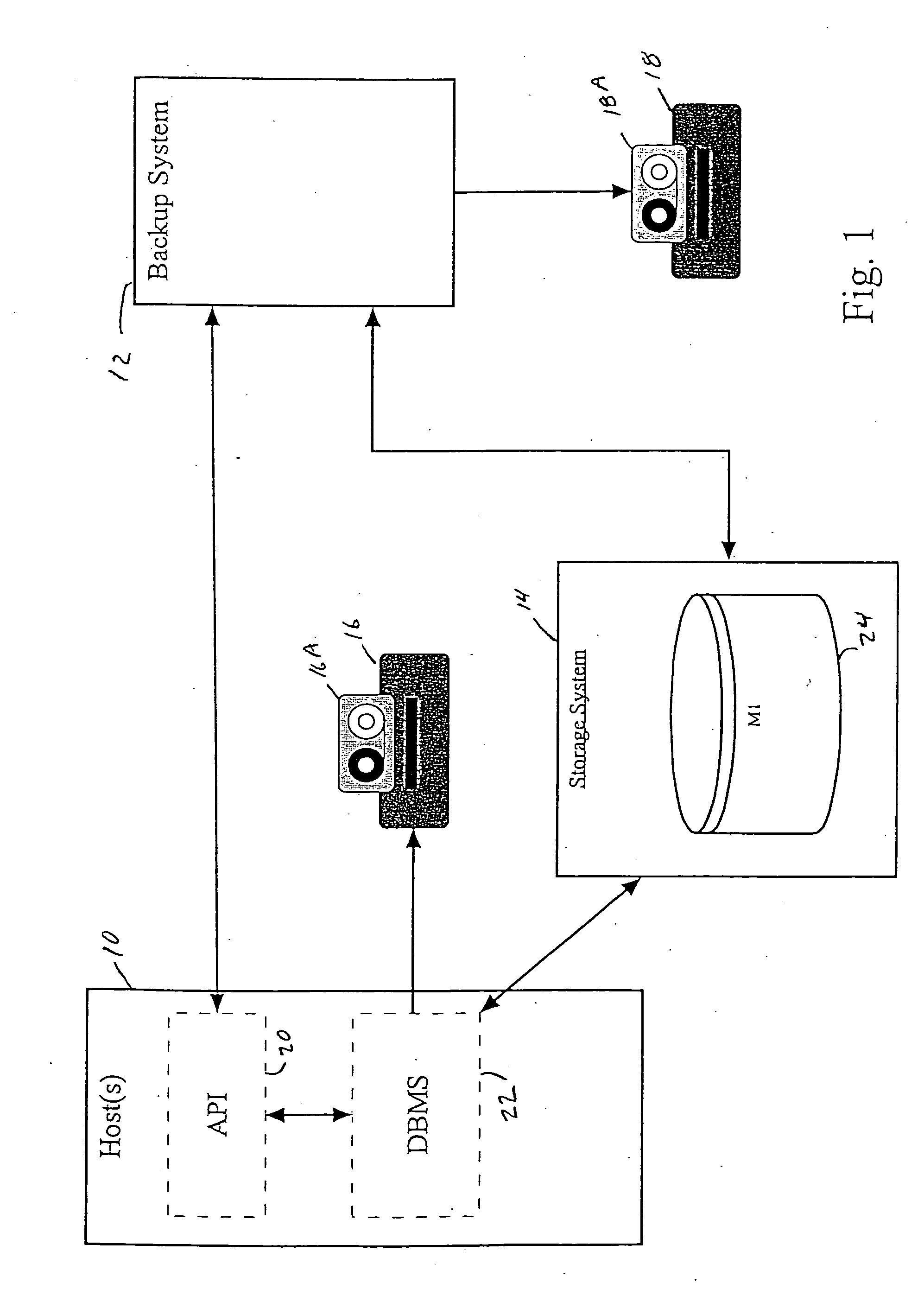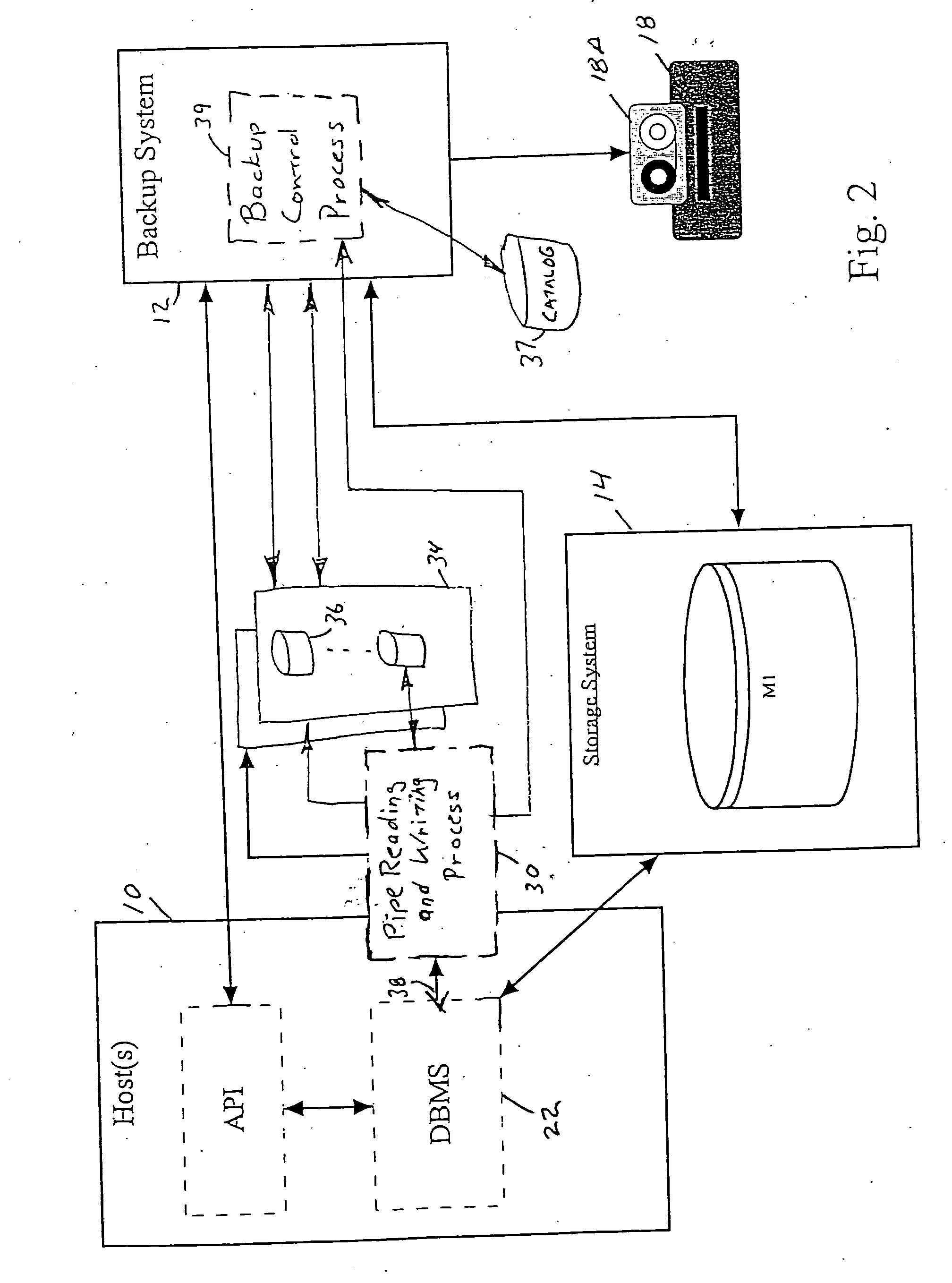Method and apparatus for storage and retrieval of very large databases using a direct pipe
- Summary
- Abstract
- Description
- Claims
- Application Information
AI Technical Summary
Benefits of technology
Problems solved by technology
Method used
Image
Examples
Embodiment Construction
[0024] The present invention provides a method and apparatus for directly connecting very large data streams from a DBMS into a backup system. As illustrated in FIG. 2, an output data stream 38 from a database export command of a DBMS 22 is piped into an intelligent pipe-reading process 30 and distributed over a set of temporary data stores 34 built from raw storage resources 36. When a data store reaches capacity, the intelligent process 30 signals the backup system 12 to begin a backup of th at data store, while the remaining export data stream. is piped into another available temporary data store 34. Once the final data store has received an end-of-pipe signal, the backup system begins completion processing of the export request (e.g., writing to tape device 18). The backup system keeps a logical backup catalog, and writes it to the backup tape with the archived datastream. Once the archive tape activity is complete, the backup system signals back via the backup control process 3...
PUM
 Login to View More
Login to View More Abstract
Description
Claims
Application Information
 Login to View More
Login to View More - R&D
- Intellectual Property
- Life Sciences
- Materials
- Tech Scout
- Unparalleled Data Quality
- Higher Quality Content
- 60% Fewer Hallucinations
Browse by: Latest US Patents, China's latest patents, Technical Efficacy Thesaurus, Application Domain, Technology Topic, Popular Technical Reports.
© 2025 PatSnap. All rights reserved.Legal|Privacy policy|Modern Slavery Act Transparency Statement|Sitemap|About US| Contact US: help@patsnap.com



